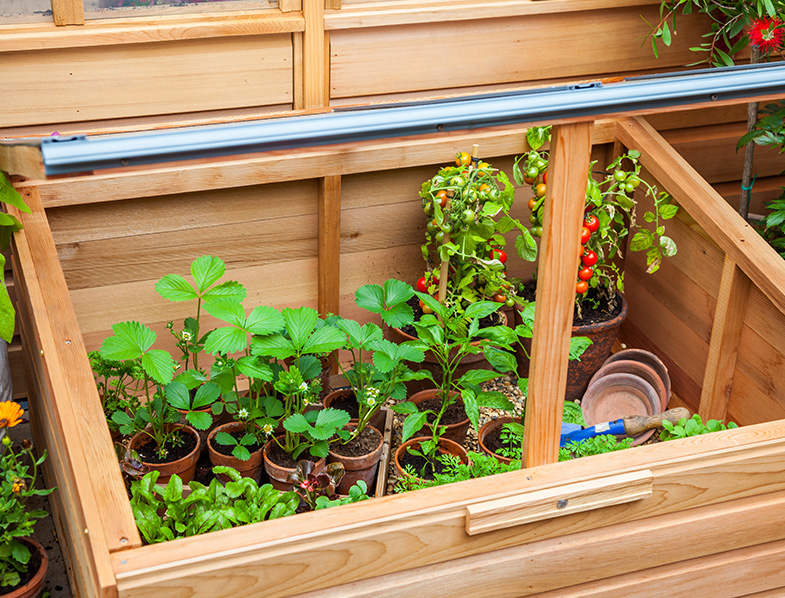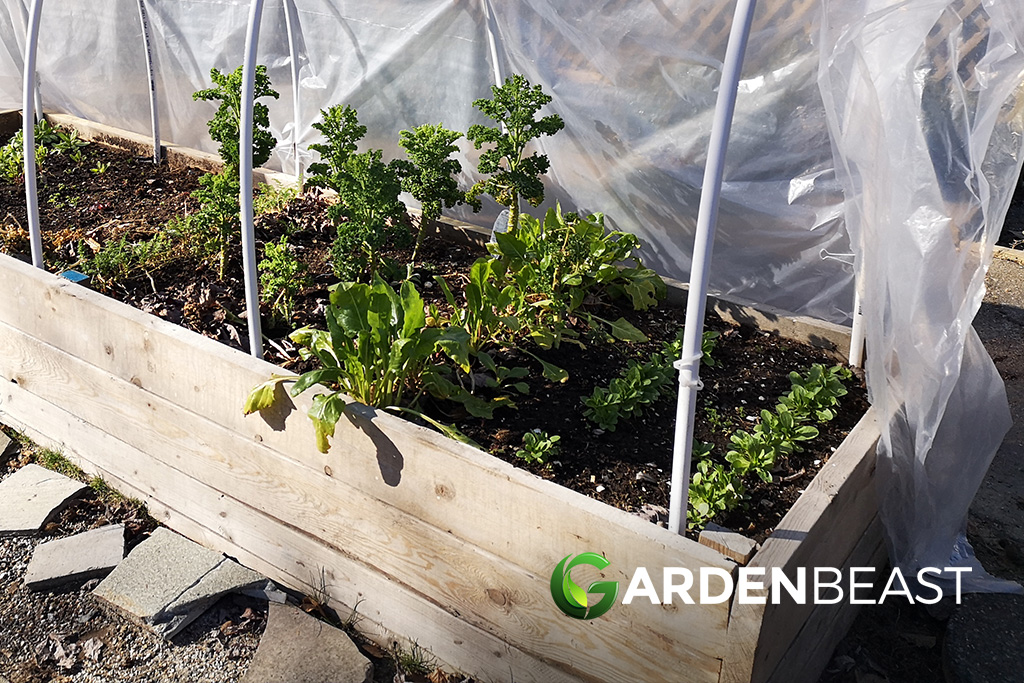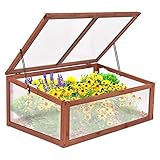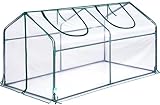Do you want to grow plants all year round without having to invest in expensive infrastructure? Look no further than cold frames, simple structures that allow you to extend your growing season and protect your plants from harsh weather conditions. In this article, we will explore the basics of cold frames, their benefits, how to choose the right one, and how to install and use them effectively. Let’s dive in!
While cold frames may seem like a modern invention, they have actually been used for centuries. In ancient Rome, for example, cold frames were used to grow vegetables and fruits during the winter months. They were also popular in medieval Europe, where they were used to grow herbs and flowers for medicinal purposes.
Today, cold frames are still widely used by gardeners and farmers to extend the growing season and protect plants from harsh weather conditions. They are especially useful for starting seedlings early in the spring or growing cool-season crops like lettuce, spinach, and kale.
Quick Facts
| Fact | Detail |
|---|---|
| What is a cold frame? | A structure used for extending the growing season and protecting plants from harsh weather conditions. |
| Origins of cold frames | Used since ancient Rome and medieval Europe for growing fruits, vegetables, and medicinal herbs. |
| Types of cold frames | DIY, Portable, Lean-To, and Commercial. |
| Benefits of using cold frames | Extending the growing season, protecting plants from harsh weather, and aiding in pest control and disease prevention. |
| Considerations when choosing a cold frame | Size, material, location, and cost. |
| Tips for using a cold frame | Choose a sunny location, monitor temperature, and water plants regularly. |
| Cold frame installation | Choose a spot with plenty of sunlight, shelter from strong winds, and good drainage. |
| Temperature and moisture control | Monitor temperature and moisture levels using a thermometer and by watering plants regularly. |
| Planting in cold frames | Choose plants that thrive in cooler temperatures with a short growing season, such as lettuce, spinach, and radishes. |
Types of Cold Frames
Cold frames come in many different shapes and sizes, and can be made from a variety of materials. Some are simple and homemade, while others are more elaborate and professionally built. Here are a few examples:
- DIY Cold Frame: This type of cold frame can be made from scrap wood, old windows, or other materials you may have lying around. It’s a great option for those who want to experiment with cold frames without spending a lot of money.
- Portable Cold Frame: This type of cold frame is lightweight and easy to move around. It’s ideal for those who want to grow plants on a patio or balcony, or for those who want to move their cold frame to different locations throughout the year.
- Lean-To Cold Frame: This type of cold frame is built against an existing structure, such as a house or garage. It’s a great option for those with limited space, as it doesn’t take up much room.
- Commercial Cold Frame: This type of cold frame is typically made from sturdy materials like aluminum or polycarbonate, and is designed to last for many years. It’s a good option for those who want a long-term solution for growing plants in cold weather.
Tips for Using a Cold Frame
If you’re new to using a cold frame, here are a few tips to help you get started:
- Choose a sunny location: Cold frames need at least six hours of sunlight per day to be effective. Choose a location that gets plenty of sun, preferably facing south or southeast.
- Monitor the temperature: Keep an eye on the temperature inside the cold frame, especially during sunny days. If it gets too hot, you may need to prop open the lid to let in some fresh air.
- Water regularly: Plants in a cold frame still need water, even during the winter months. Make sure to water them regularly, but be careful not to overwater, as this can lead to root rot.
- Start small: If you’re new to gardening, start with a small cold frame and a few easy-to-grow plants. This will help you get a feel for how the cold frame works and what types of plants grow best in it.
With a little bit of planning and care, a cold frame can be a valuable addition to any garden. Whether you’re growing vegetables, herbs, or flowers, a cold frame can help you extend the growing season and enjoy fresh produce all year round.

Benefits of Using Cold Frames in Your Garden
Why should you consider using cold frames in your garden? Let’s explore some of the benefits:
Extending the Growing Season
Cold frames allow you to start planting earlier in the spring and continue growing crops well into the fall. By using a cold frame, you can extend your growing season by several months, allowing you to harvest fresh produce even when the weather outside is cold and dreary.
For example, if you live in an area with a short growing season, you can use a cold frame to get a head start on planting. You can start your seeds indoors and then move them to the cold frame once the weather starts to warm up. This will give your plants a few extra weeks to grow before you transplant them into your garden.
Additionally, if you live in an area with a long, cold winter, you can use a cold frame to keep your plants alive and healthy. The cold frame will protect your plants from the freezing temperatures and harsh winds, allowing them to continue growing even when the weather outside is less than ideal.
Protecting Plants from Harsh Weather Conditions
Cold frames provide a protective shelter for plants that would otherwise suffer from harsh weather conditions such as frost, wind, and heavy rain. This means you can grow delicate plants like herbs, lettuce, and spinach all year round without worrying about them getting damaged by the elements.
For example, if you live in an area with strong winds, a cold frame can protect your plants from being battered and broken. The frame will act as a barrier, reducing the force of the wind and preventing your plants from being uprooted or damaged.
Similarly, if you live in an area with heavy rain or snow, a cold frame can prevent your plants from being drowned or buried. The frame will provide a sheltered space where your plants can stay dry and protected, allowing them to continue growing even during a storm.
Pest Control and Disease Prevention
Cold frames also act as a barrier against pests and diseases. By keeping your plants in a closed environment, you reduce the risk of them being attacked by insects, rodents, or fungal infections. This means you can grow your plants without having to use harmful chemicals or pesticides.
For example, if you have a problem with aphids or other insects, a cold frame can prevent them from getting to your plants. The frame will create a physical barrier that the insects cannot penetrate, keeping your plants safe and healthy.
Similarly, if you live in an area with a high risk of fungal infections, a cold frame can help prevent the spread of disease. The frame will create a dry, well-ventilated environment that is less conducive to fungal growth, reducing the risk of your plants getting infected.

Choosing the Right Cold Frame for Your Needs
If you’re an avid gardener, you know that extending your growing season is key to a bountiful harvest. That’s where cold frames come in handy. Cold frames are simple structures that use the sun’s energy to create a warm microclimate for your plants, allowing you to start your garden earlier in the spring and extend it later into the fall. But with so many options available, how do you choose the right cold frame for your needs? Let’s explore some of the factors you should consider.
Factors to Consider When Selecting a Cold Frame
When selecting a cold frame, size should be one of your primary considerations. Do you want a small cold frame that fits a few plants, or a large one that can accommodate a whole row? Material is another important factor to consider. Wood is a popular choice due to its durability and aesthetic appeal, but metal and PVC pipes offer a more affordable option.
Location is also crucial. You’ll want to place your cold frame in an area that receives plenty of sunlight and is sheltered from the wind. If you have a sloped yard, consider placing your cold frame on the south-facing side to maximize sun exposure.
Finally, cost is another important factor to consider. Cold frames can range in price from less than $50 to several hundred dollars, depending on the size and materials used. Determine your budget before you start shopping to ensure you find a cold frame that meets your needs without breaking the bank.
Popular Cold Frame Materials and Designs
Cold frames can be made of various materials, each with their own benefits and drawbacks. Wood is a popular choice due to its natural beauty and durability. Cedar is a popular choice for its resistance to rot and insects, while redwood is known for its natural resistance to decay. Metal frames are also a popular choice due to their strength and durability, but they can be more expensive than wood or PVC. PVC frames are the most affordable option, but they may not be as durable as wood or metal.
Designs can also vary from simple and functional to elaborate and ornamental, depending on your preferences. Some cold frames are designed to look like miniature greenhouses, with clear plastic or glass panels that allow for maximum sunlight. Others are more utilitarian, with solid sides and a clear top that can be propped open for ventilation.
DIY vs. Purchasing a Pre-Made Cold Frame
Another factor to consider is whether to build your own cold frame or purchase a pre-made one. DIY cold frames allow you to customize the size and design to your liking, and can be a fun and rewarding project for the handy gardener. However, building a cold frame from scratch can be time-consuming and requires some basic carpentry skills.
Pre-made cold frames, on the other hand, are more convenient and come in a range of sizes and materials. They are a good option for gardeners who want a cold frame without the hassle of building one themselves. However, pre-made cold frames can be more expensive than DIY options.
Overall, selecting the right cold frame for your needs requires careful consideration of several factors, including size, material, location, and cost. By taking the time to research your options and weigh the pros and cons of each, you can find a cold frame that will help you extend your growing season and enjoy a bountiful harvest.
- Beautify Green Spaces and Large Capacity-- Big storage capacity for various types of plants and elegant and simple design. Giving your patios, balconies, decks and gardens a touch of green, without any fuss.
- Foldable Top-- The top part of this product could be open and close, and two bolts on the two sides which could be used to fix the top. And in the sunny day you could open it to let your plants absorb the sunlight and in rainy, you could close the top to keep it away from the rain.
- Solid Structure--Structured with heavy-duty wood for extended durability, and the structure follows the scientific principle and is strong enough to hold seed trays, pots and plant growth light.
- Easy Movement and Assembly--All parts are detachable, so you can set it up wherever you want to, and move it when the seasons shift. No tools required.
- 100% Satisfaction Guaranteed--We would try our best to give you satisfied shopping experience, if there is quality, we would make best solution to solve the problem.
- ITEM EXACTLY MATCH THE DESCRIPTION - Steel Framework(Heavy-duty powder coated)+Transparent PVC cover(UV-protected, waterproof, reinforced). The given guy ropes can make cover & frame combined better).
- GOOD SIZED PORTABLE MINI GREENHOUSE - Size of 71x36x36-inch, big enough to work for good sized plant pot & seed bed. It can be used both indoors & outdoors.
- OVERLONG COVER DESIGN - It makes this green house more airtight and secure. Just bury it in the soil, or put some bricks on it. An easy but useful way.
- KEEP THE GROUND NICE AND WARM - This has about a 95% germination rate instead of the usual 80% due to the nice ground warmth! Equipped with 2 doors and 4 zippers, the greenhouse can be completely closed to keep warm in winter.
- SIDE ZIPPER DOOR - It can provide easy access to your plant and allow air to flow through even on hot days. (For more information on warranty or products, scan the Transparency Codes on Cartons)
- VegTrug Cold Frame: Provide a natural growing habitat for your plants with VegTrug’s durable and versatile Cold Frame. Our spacious and visually attractive cold frame provides the perfect microclimate environment to extend your growing season
- Wooden Frame: Structured of high-quality and robust, 100% FSC-certified wood, the Cold Frame offers extended durability. The wood frame has 6mm double insulated and shatterproof polycarbonate that safeguards your plants from extreme weather conditions
- Cold Frames for Winter Gardening: Our outdoor garden frame is exactly what your plants or harvest need to survive the colder months. Keeping your plants warm, the wood frame increases crop yield and allows the growing year to begin early
- Optimal Growth Condition: The attached lid of our cold frame provides proper aeration and ventilation, helping your plants to flourish and grow. The lid further improves your harvest by protecting the plants from spring frosts, dust, snow, and dirt
- Highly Compatible: Our cold frame comes in small and medium sizes. The small (1m) frame is compatible with a small classic VegTrug raised bed planter, while the medium (1.8m) frame is suitable for a medium classic VegTrug raised bed planter
Last update on 2024-09-24 / Affiliate links / Images from Amazon Product Advertising API
Properly Installing and Using Your Cold Frame
A cold frame is a great way to extend your growing season and protect your plants from harsh weather conditions. However, choosing the right cold frame is just the first step. To ensure your plants thrive, it is essential to install and use your cold frame properly. Here are some tips to help you get started:
Selecting the Ideal Location for Your Cold Frame
Choosing the right location for your cold frame is crucial to its success. You want to select a spot that gets plenty of sunlight, is sheltered from strong winds, and has good drainage. A south-facing location is ideal, as it will receive the most sunlight throughout the day. You also want to make sure the location is easily accessible, as you will need to monitor and water your plants regularly.
Before installing your cold frame, prepare the area by removing any debris and leveling the ground. You can also add a layer of gravel or sand to improve drainage.
Tips for Effective Temperature and Moisture Control
One of the biggest benefits of a cold frame is its ability to regulate temperature and moisture levels. To ensure your plants stay healthy, it is important to monitor these levels regularly.
Use a thermometer to monitor the temperature inside the cold frame. Keep the lid open or closed accordingly to maintain the ideal temperature for your plants. If the temperature inside the cold frame gets too hot, you can prop open the lid or add shade cloth to reduce the amount of sunlight. If the temperature gets too cold, you can cover the cold frame with blankets or insulating material.
Moisture control is also important for the health of your plants. You want to ensure the soil stays moist but not waterlogged. Water your plants regularly and avoid overwatering. You can also add a layer of mulch to help retain moisture.
Planting and Transplanting Guidelines
When planting in your cold frame, choose plants that thrive in cooler temperatures and have a short growing season. Some examples include lettuce, spinach, and radishes. You can also transplant seedlings from your indoor garden into your cold frame to give them a head start. Make sure to follow planting and transplanting guidelines to ensure the best possible outcome.
Before planting, prepare the soil by loosening it with a garden fork and adding compost or other organic matter. Plant your seeds or seedlings according to the instructions on the package.
With these tips, you can ensure your cold frame is installed and used properly, giving your plants the best chance for success. Happy gardening!
Conclusion
Cold frames are a simple and effective way to extend your growing season and protect your plants from harsh weather conditions. By choosing the right cold frame, installing it properly, and using it effectively, you can enjoy fresh produce all year round without breaking the bank. Happy gardening!
Cold Frame FAQS
What is the purpose of a cold frame?
A cold frame is a protective structure used in gardening to extend the growing season and protect plants from harsh weather conditions. It allows you to start planting earlier in the spring and continue growing crops well into the fall.
How much warmer does a cold frame stay?
The temperature inside a cold frame can be significantly warmer than the outside ambient temperature. It varies depending on the amount of sunlight, but it can be 5-20 degrees Fahrenheit warmer inside a cold frame.
What is a cold frame vs warm frame?
Cold frames and warm frames serve similar purposes in protecting plants and extending the growing season. However, the primary difference is in the source of heat. Cold frames rely on sunlight for heat, hence are typically warmer during the day and cooler at night. Warm frames, on the other hand, have an additional heat source, such as a heating cable or fresh manure, which can provide heat even during the night or on cooler days.
What is the definition of a cold frame?
A cold frame is a simple structure, typically consisting of a transparent roof and varying sides, used in gardening to protect plants from adverse weather and extend the growing season. The transparent roof allows sunlight in, creating a warmer microclimate inside the frame.
What is the difference between a cold frame and a greenhouse?
While both cold frames and greenhouses are used to extend the growing season and protect plants, there are a few key differences. Cold frames are typically smaller, simpler structures, often without artificial heat, and are used for hardening off plants or growing a small number of crops. Greenhouses are larger, more permanent structures, often with heating and ventilation systems, used for growing a wide variety of plants year-round.
What are the cons of cold frames?
While cold frames offer many benefits, there are also a few potential downsides. These include limited space, the need for regular monitoring and adjustment to prevent overheating or under-watering, and the potential for pests or diseases to spread quickly due to the close proximity of plants. Additionally, cold frames may not be suitable for plants that require very warm temperatures or those that grow tall.



